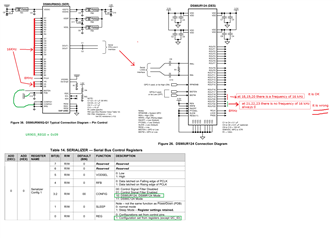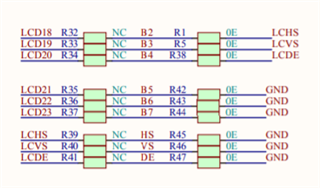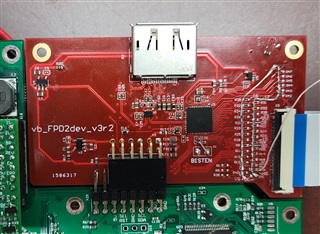Other Parts Discussed in Thread: DS90UR241, DS90UR124
Our design includes DS90UR905 chip to transmit picture in 24 bit to the older DS90UR214 in compatibility mode.
DS90UR214 design uses bits 21 22 23 for DE HS VS.
For some reason we cannot receive anything on those pins when we transmit the picture via DS90UR905. They go through fine when UR124 is used.
We get the proper signal (test signal 16KHz) on all pins except 21 22 23. CLK is correct. LCK = 1.
Anything we do wrong ? The connection diagram is attached.
Please let us know if anything we are doing wrong and what should we try ?






